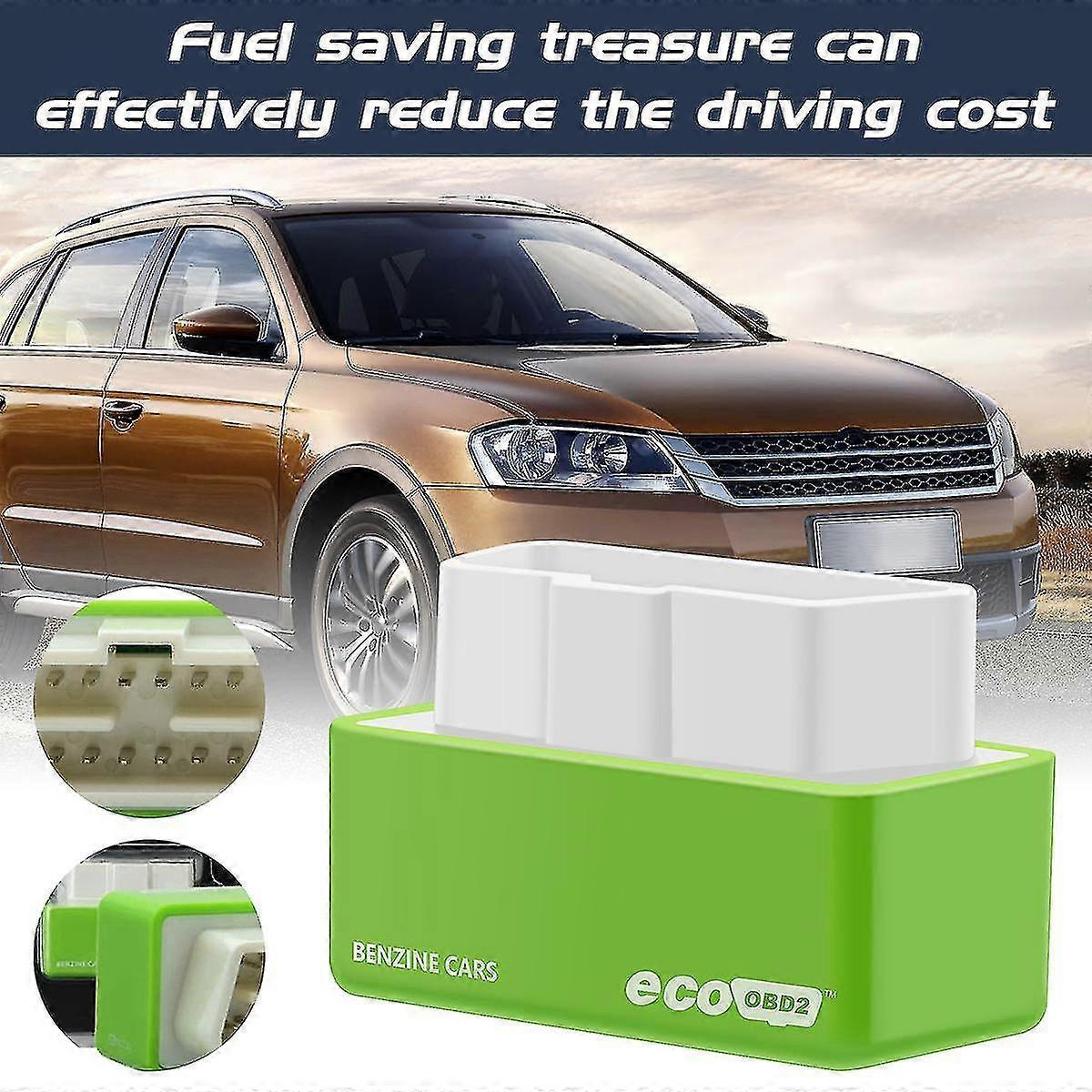Your cart is currently empty!
Optifuel Fuel Saver
Optifuel fuel saver is operated through sophisticated real -time analysis and adaptation of your vehicle’s engine management systems. Once connected to the OBD2 port, the device establishes communication with the electronic control unit of your car, which continuously monitor important engine parameters including fuel injection timing, air-to-fuel ratio, spark advanced and throttle reaction characteristics.
Description
Optifuel Fuel Saver: A Comprehensive Overview
This comprehensive document examines the Optifuel Fuel Saver, a smart OBD2 device designed to optimize vehicle fuel economy through electronic engine management adjustments. We’ll explore its functionality, benefits, limitations, and real-world effectiveness based on customer experiences and expert analysis.
What is Optifuel Fuel Saver?
The Optifuel Fuel Saver is a sophisticated electronic device engineered to enhance vehicle fuel efficiency through direct integration with your car’s onboard diagnostic system. This compact, chip-based device connects to your vehicle’s OBD2 (On-Board Diagnostics II) port, which serves as the standard interface for accessing engine management data in modern automobiles.
Unlike traditional fuel-saving gadgets that rely on questionable magnetic fields or fuel additives, the Optifuel operates as an intelligent intermediary between your vehicle’s Electronic Control Unit (ECU) and its various engine systems. The device is specifically designed for drivers seeking to reduce their fuel expenses without making permanent modifications to their vehicles or requiring extensive mechanical knowledge.
The technology behind Optifuel represents a convergence of automotive engineering and smart electronics, promising to deliver tangible fuel savings through precise optimization of engine parameters. Its plug-and-play design makes it accessible to everyday drivers, while its claimed ability to learn and adapt to individual driving patterns sets it apart from static fuel-saving solutions in the marketplace.
How Does Optifuel Fuel Saver Work?
The Optifuel Fuel Saver operates through sophisticated real-time analysis and optimization of your vehicle’s engine management systems. Once connected to the OBD2 port, the device establishes communication with your car’s Electronic Control Unit, continuously monitoring critical engine parameters including fuel injection timing, air-to-fuel ratios, spark advance, and throttle response characteristics.
During the initial 150-mile calibration period, the Optifuel system actively learns your unique driving patterns, road conditions, and vehicle performance characteristics. This adaptive learning process allows the device to create a personalized optimization profile tailored to your specific driving habits, whether you’re primarily engaged in city driving, highway cruising, or mixed driving conditions.
The device makes micro-adjustments to fuel delivery timing, optimizes combustion efficiency, and fine-tunes engine response parameters to maximize fuel economy while maintaining performance standards. These adjustments occur seamlessly in the background, with the system continuously refining its optimization algorithms based on ongoing performance data. Manufacturers claim these intelligent modifications can result in fuel savings of hundreds of dollars annually for drivers with higher mileage requirements, such as commuters or rideshare operators.
Key Features of Optifuel Fuel Saver
True Plug-and-Play Installation
Requires no technical expertise, special tools, or permanent modifications to your vehicle. Simply locate the OBD2 port and connect the device for immediate functionality.
Intelligent Micro-Adjustments
Makes precise, real-time optimizations to fuel mixture, ignition timing, and engine parameters to improve both fuel efficiency and overall driving quality.
Zero Maintenance Requirements
Once installed, the device operates autonomously without requiring software updates, manual calibration, or ongoing technical maintenance from the user.
Warranty Protection
Designed to work within manufacturer specifications without voiding most vehicle warranties, providing peace of mind for newer car owners.
Benefits of Optifuel Fuel Saver
The primary advantage of the Optifuel Fuel Saver lies in its potential to deliver substantial weekly fuel cost reductions. After the initial 150-mile calibration period, users typically report savings ranging from $15 to $25 per week, depending on their driving frequency and current fuel prices. For high-mileage drivers, including rideshare operators, delivery professionals, and long-distance commuters, these savings can accumulate to hundreds of dollars annually.
Beyond mere cost savings, users frequently experience enhanced driving performance characteristics. The device’s optimization of fuel delivery and ignition timing often results in smoother acceleration profiles, reduced throttle lag during overtaking maneuvers, and more responsive engine behavior across various driving conditions. These improvements contribute to a more enjoyable and confident driving experience while simultaneously reducing fuel consumption.
The environmental benefits represent another significant advantage, as optimized combustion efficiency leads to cleaner emissions and reduced environmental impact. Additionally, the improved engine efficiency may contribute to extended engine lifespan by reducing combustion-related stress and deposits, potentially saving thousands in long-term maintenance costs. The device also provides peace of mind through its non-invasive installation, allowing users to remove it at any time without affecting their vehicle’s original configuration or warranty status.
How to Use Optifuel Fuel Saver
Locate OBD2 Port
Find your vehicle’s OBD2 diagnostic port, typically located under the dashboard near the driver’s left knee or steering column area.
Install Device
Ensure the engine is off, then firmly insert the Optifuel chip into the OBD2 port until it clicks securely into place.
Drive Normally
Operate your vehicle normally for the first 150 miles while the device learns your driving patterns and optimizes engine parameters.
Enjoy Benefits
After calibration, experience improved fuel efficiency and performance without any additional manual adjustments or maintenance.
Pros of Optifuel Fuel Saver
Installation Advantages
The installation process requires no technical expertise, special tools, or automotive knowledge. Most users can complete the installation in under 60 seconds, making it one of the most accessible vehicle modifications available. The device’s universal compatibility with OBD2 systems means it works with virtually any car, truck, or SUV manufactured after 1996.
- No permanent vehicle modifications required
- Reversible installation process
- Compatible with most modern vehicles
- No tools or technical skills needed
Performance Benefits
Independent user feedback consistently highlights genuine fuel savings and improved driving characteristics. Many users report noticing differences within the first few weeks of use, with benefits becoming more pronounced after the full calibration period. The device’s ability to work with existing engine management systems ensures optimal performance without compromising reliability.
- Documented fuel savings from real users
- Enhanced acceleration and throttle response
- No negative impact on engine performance
- Environmentally friendly emissions reduction
Cons of Optifuel Fuel Saver
Variable Results
Effectiveness depends heavily on vehicle condition, age, maintenance history, and driving patterns. Vehicles already operating at peak efficiency may see minimal improvements, while older or poorly maintained vehicles might experience more dramatic results.
Limited Scientific Validation
While user testimonials are generally positive, comprehensive independent testing by automotive organizations remains limited. Some industry experts question the device’s ability to significantly improve fuel economy beyond what proper maintenance can achieve.
Delayed or Minimal Impact
Some users report that benefits take longer than expected to materialize, or that improvements are less dramatic than anticipated. Individual results vary significantly based on driving habits, vehicle type, and environmental conditions.
Customer Reviews and Experiences
Customer feedback for the Optifuel Fuel Saver presents a nuanced picture of real-world effectiveness, with experiences varying significantly across different user demographics and vehicle types. The majority of users report positive outcomes, particularly those engaged in high-mileage driving scenarios such as rideshare services, delivery work, or long daily commutes.
Professional drivers, including Uber and Lyft operators, frequently highlight the device’s impact on their bottom line. These users typically drive 200-400 miles daily and are acutely aware of fuel consumption patterns, making them particularly qualified to assess the device’s effectiveness. Many report achieving additional miles per tank, with some documenting fuel cost reductions that directly improve their weekly earnings.
However, customer experiences aren’t universally positive. A minority of users express disappointment with minimal or delayed improvements, particularly those with newer, well-maintained vehicles or limited daily driving. These mixed results suggest that the device’s effectiveness is highly dependent on individual circumstances, including vehicle condition, driving patterns, and baseline fuel efficiency. Despite varying outcomes, the majority of customers appreciate the device’s ease of installation and the absence of any negative impacts on vehicle performance or reliability.
Examples of Customer Feedback
Jason M. – Commuter
“Noticed the fuel gauge moving slower after about 2 weeks of use. My 45-minute daily commute definitely costs less now, and the car feels more responsive during highway merging.”
Erica D. – Rideshare Driver
“As a full-time rideshare driver, every gallon counts. Getting more miles per tank means more profit per day. The ride quality is noticeably smoother too, which passengers appreciate.”
Ronald T. – Vehicle Owner
“Installation was incredibly simple, and I was worried about my warranty. Confirmed with my dealer that it doesn’t void coverage. Seeing gradual but consistent fuel savings.”
Pickford Harper – Long-Distance Driver
“This little device has genuinely reduced my fuel bills. For someone who drives cross-country regularly, it’s like having a magic gadget that pays for itself.”
Potential Side Effects and Risks
Extensive user reporting and available documentation indicate that the Optifuel Fuel Saver presents minimal risk to vehicle performance, safety, or electronic systems when properly installed. The device operates within the parameters established by vehicle manufacturers and makes only minor adjustments to existing engine management protocols, rather than overriding or bypassing critical safety systems.
The primary consideration for potential users involves the variability of results rather than safety concerns. Some vehicles may not respond significantly to the optimization adjustments, particularly newer models with already-efficient engine management systems or vehicles with underlying mechanical issues that prevent optimal fuel economy regardless of electronic optimization.
Installation safety is straightforward, as the OBD2 connection is designed for diagnostic equipment and can safely accommodate aftermarket devices. The device draws minimal power from the vehicle’s electrical system and includes built-in protections against voltage fluctuations or electrical interference. Users should ensure their vehicle’s OBD2 port is clean and free from damage before installation, and the device should be removed if any unusual engine behavior occurs, though such instances are extremely rare according to available user reports.
Is Optifuel Fuel Saver a Scam?
The question of legitimacy surrounding the Optifuel Fuel Saver requires careful examination of available evidence and realistic expectation setting. While some independent reviewers have expressed skepticism about the magnitude of claimed benefits, the device differs significantly from obvious scam products through its use of legitimate automotive technology and generally positive user feedback from verified purchasers.
Skeptical assessments often focus on the marketing claims rather than the underlying technology. Some industry experts argue that properly maintained vehicles already operate near optimal efficiency, limiting the potential for significant improvements through aftermarket optimization devices. However, this perspective may not account for the reality that many vehicles operate with suboptimal maintenance, worn components, or factory settings prioritizing emissions compliance over maximum fuel efficiency.
The most balanced assessment suggests that while the Optifuel may not deliver dramatic fuel savings for all users, it represents a legitimate attempt to optimize engine performance through established automotive technology. The device’s low cost, easy reversibility, and absence of reported negative effects make it a relatively low-risk investment for curious consumers. Potential buyers should approach the purchase with realistic expectations and understand that individual results will vary based on numerous factors beyond the device’s control.
Independent Expert Reviews
Industry Skepticism
Several automotive engineers and industry publications have expressed reservations about aftermarket fuel optimization devices, arguing that modern engine management systems already operate at near-optimal efficiency levels. These experts contend that significant fuel savings claims may be overstated for most vehicles.
Professional automotive organizations have not universally endorsed OBD2-based fuel savers, citing the need for more comprehensive independent testing and peer-reviewed studies to validate effectiveness claims across diverse vehicle populations.
Consumer Advocacy Perspective
Consumer protection agencies generally advise caution when evaluating fuel-saving devices, recommending that buyers focus on proven methods like proper maintenance, tire pressure optimization, and efficient driving techniques as primary fuel economy strategies.
However, some consumer advocates acknowledge that OBD2-based devices represent a more credible approach than previous generations of fuel-saving gadgets, particularly given their non-invasive installation and reversible nature.
Where to Buy Optifuel Fuel Saver
The Optifuel Fuel Saver is primarily available through the manufacturer’s official website, which serves as the most reliable source for authentic products and current pricing information. The official sales channel typically offers the most comprehensive customer support, warranty protection, and return policies. Purchasing directly from the manufacturer also ensures access to any available promotional pricing, bulk discounts, or limited-time offers that may not be available through third-party retailers.
Approved online retailers may also carry the Optifuel device, but consumers should exercise caution when purchasing from unauthorized sellers or marketplace platforms where counterfeit products are more prevalent. Unauthorized sellers may offer lower prices, but these products often lack quality assurance, customer support, or warranty protection. Some fraudulent sellers use the Optifuel name to market inferior or non-functional devices that can potentially damage vehicle electronics.
Before making a purchase, consumers should verify seller credentials, read recent customer reviews, and confirm that warranty support will be available. The official website typically provides a list of authorized retailers and may offer buyer protection programs. Seasonal promotions and volume discounts are occasionally available, particularly for fleet operators or multiple-vehicle households seeking to outfit several cars with the optimization technology.
Cost and Value Proposition
Purchase Price
Typical retail cost per unit from authorized sellers
Weekly Savings
Potential fuel cost reduction after calibration period
Annual Benefits
Projected yearly savings for high-mileage drivers
Payback Period
Weeks required to recover initial investment
The economic case for the Optifuel Fuel Saver becomes compelling when analyzed through the lens of rapid payback periods and ongoing savings potential. For drivers who travel significant distances weekly, the device can theoretically pay for itself within the first month of use, with all subsequent savings representing pure cost reduction.
High-mileage drivers, including rideshare operators who may spend $200-400 weekly on fuel, stand to benefit most from the optimization technology. Even modest percentage improvements in fuel efficiency translate to substantial dollar savings over time. Fleet operators managing multiple vehicles may find bulk purchasing options that further improve the cost-benefit ratio, particularly when combined with other fuel efficiency initiatives.
Compatibility and Usage Conditions
Vehicle Requirements
Compatible with most vehicles manufactured after 1996 equipped with OBD2 diagnostic ports
- Gasoline engines show best results
- Diesel compatibility varies by model
- Hybrid systems may have limited benefits
Maintenance Prerequisites
Optimal performance requires basic vehicle maintenance
- Clean air filters and fuel injectors
- Proper tire pressure maintenance
- Regular oil changes and tune-ups
Operating Conditions
Performance may vary based on environmental factors
- Temperature extremes affect efficiency
- Driving terrain influences results
- Traffic patterns impact optimization
Usage Patterns
Best results achieved with consistent driving habits
- Regular daily driving preferred
- Mixed city/highway conditions ideal
- Longer trips show greater benefits
Frequently Asked Questions
Will it void my vehicle warranty?
Generally no, as the device connects to the diagnostic port without modifying engine components. However, consult your dealer for specific warranty terms and conditions.
Can I use it on older vehicles?
Yes, any vehicle with an OBD2 port (1996 and newer in most cases) should be compatible. Older vehicles may actually show more dramatic improvements.
What if I switch between multiple cars?
The device can be easily unplugged and reinstalled in different vehicles as needed. Each car will require its own 150-mile calibration period.
Is there a money-back guarantee?
Most authorized sellers offer satisfaction guarantees or return policies. Check specific terms before purchasing to understand your protection options.
Optifuel Fuel Saver vs. Other Fuel Saving Devices
The fuel-saving device market includes numerous products with varying levels of effectiveness and scientific credibility. Traditional magnetic fuel line attachments and fuel additives have dominated this space for decades, but these products generally lack the technological sophistication and measurable impact of modern electronic optimization devices like the Optifuel.
Magnetic fuel savers claim to restructure fuel molecules through magnetic fields, but scientific evidence supporting these claims remains limited and controversial. Similarly, fuel additives promise improved combustion efficiency but often provide only temporary benefits or work primarily in vehicles with existing fuel system deposits. These passive approaches contrast sharply with the Optifuel’s active electronic intervention in engine management systems.
Electronic OBD2-based devices represent the most advanced category of aftermarket fuel optimization tools, but not all products in this category offer genuine functionality. Some cheaper alternatives simply plug into the diagnostic port without making any actual adjustments, serving as expensive placebos. The Optifuel distinguishes itself through its claimed adaptive learning capabilities and real-time optimization algorithms, though independent verification of these advanced features remains limited across the broader product category.
Tips for Maximizing Fuel Efficiency (With or Without Devices)
Vehicle Maintenance
Maintain proper tire pressure, replace air filters regularly, and keep up with scheduled maintenance
- Check tire pressure monthly
- Replace air filters every 12,000 miles
- Use recommended oil viscosity
- Address check engine lights promptly
Driving Techniques
Adopt smooth acceleration and braking patterns while maintaining steady highway speeds
- Accelerate gradually from stops
- Maintain consistent highway speeds
- Use cruise control when appropriate
- Anticipate traffic flow changes
Trip Planning
Combine errands, minimize cold starts, and choose efficient routes to reduce overall fuel consumption
- Plan efficient errand routes
- Reduce unnecessary trips
- Remove excess weight from vehicle
- Minimize idling time
Final Thoughts & Verdict
The Optifuel Fuel Saver represents a legitimate attempt to address rising fuel costs through accessible automotive technology, offering a low-risk entry point for drivers seeking to optimize their vehicle’s fuel economy. While the device may not deliver dramatic results for every user, its non-invasive installation, reversible nature, and generally positive user feedback make it a reasonable consideration for high-mileage drivers and cost-conscious consumers.
The most compelling use case emerges for professional drivers, long-distance commuters, and fleet operators who can maximize the device’s potential benefits through consistent high-mileage driving patterns. These users are most likely to notice and appreciate modest fuel efficiency improvements that translate to meaningful cost savings over time. Conversely, occasional drivers or owners of newer, well-maintained vehicles may find the benefits less pronounced or slower to materialize.
Realistic expectations remain crucial for potential buyers. The Optifuel should be viewed as one component of a comprehensive fuel efficiency strategy that includes proper vehicle maintenance, efficient driving techniques, and smart trip planning. While it may not revolutionize fuel economy for every vehicle, the device offers an affordable, reversible optimization tool that has demonstrated genuine benefits for many users. For drivers willing to invest in an experimental approach to fuel savings, the Optifuel Fuel Saver presents a low-risk opportunity with potentially meaningful rewards, particularly when combined with other proven fuel efficiency practices.







Reviews
There are no reviews yet.